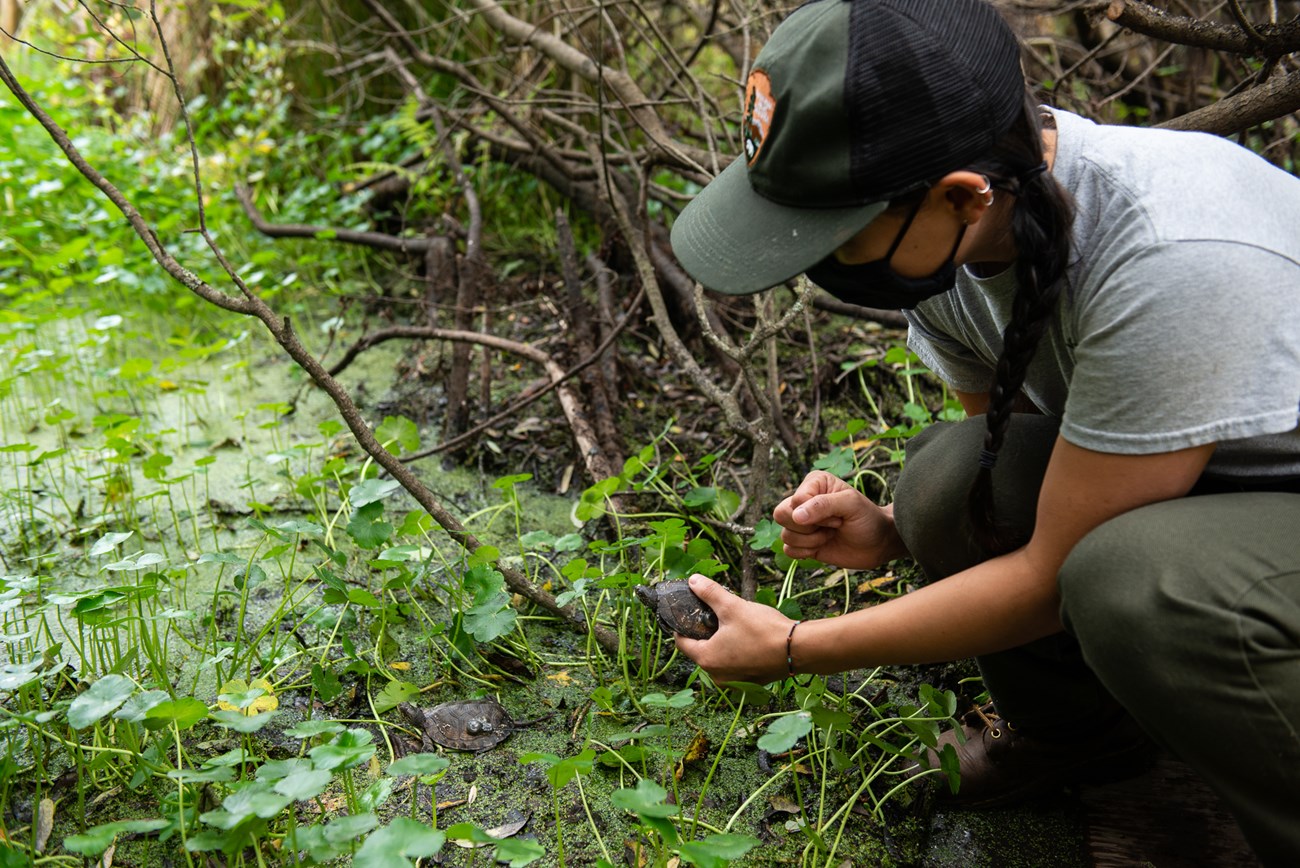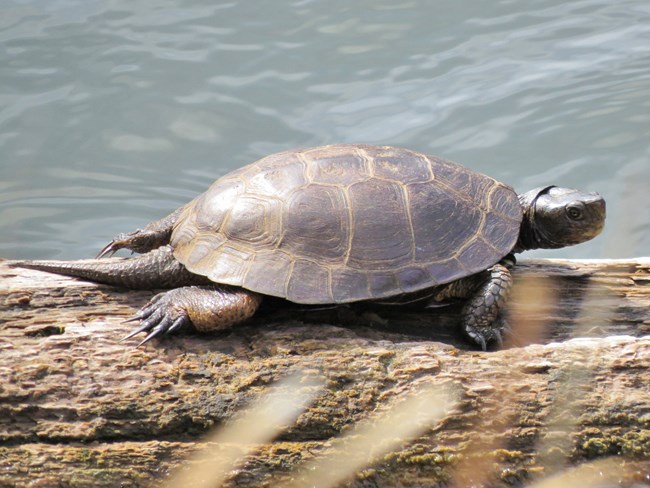Last updated: March 22, 2021
Article
A Record Year for Western Pond Turtle Reintroductions

NPS
October 2020 - Last month, scientists released a total of 41 juvenile turtles in Golden Gate National Recreation Area, almost double the amount released in the past three years combined! This is the first year scientists released western pond turtles to Rodeo Lake, now home to 20 new turtle residents. Biologists released 14 turtles in the Redwood Creek watershed and seven turtles to ‘donor’ ponds near the Tomales Bay Trail in the park’s northern district (managed by Point Reyes National Seashore). The releases are part of an ongoing effort to re-establish native turtle populations in southern Marin County.
Western pond turtles are the only remaining freshwater turtle species native to California. Before their reintroduction, the turtles were not seen in southern Marin County since the 1990s. Nest failure rates over 80% are common in freshwater turtles due to predation from animals like skunks and raccoons. Once hatched, the small turtles are vulnerable to predation by their native predators and non-native predators such as bullfrogs and bass. Released pet turtles like the more aggressive, non-native red-eared slider also compete with the pond turtles for food, basking sites, and egg-laying sites.

© dgreenberger / Photo 732370 / 2014-03 / CC BY-NC-ND
To give the turtles a head start, scientists collect turtle eggs from healthier populations in Point Reyes. The ‘donor’ eggs then hatch in incubators at Sonoma State University and are raised for 1–2 years in captivity at the San Francisco Zoo. By the time of their release, the turtles are roughly 2–3 inches long and out of the incredibly vulnerable first stages of life.
Then, scientists attach a small radio transmitter to the turtles’ shells to track their location and monitor their success after reintroduction. “Monitoring helps with seeing how the turtles use their environments. We found some turtles move out of the main channel of the creek during the winter, presumably to escape high winter flows.” said Golden Gate Aquatic Ecologist Darren Fong. Most importantly, radio-monitoring helps scientists know if the turtles are still alive. Thirteen of the 20 turtles previously released in the Redwood Creek Watershed were still present in the project area when biologists checked on them over the summer. "The released turtles seem to be healthy" said Fong.
Biologists hope the reintroductions will help the turtles establish healthy, self-sustaining populations in their historically inhabited regions. While next year is the last year of active turtle releases, turtle monitoring will continue. Individuals can get involved with turtle monitoring through the turtle observer program by Marin Municipal Water District or by posting turtle observations on iNatrualist.
For More Information
- Contact Golden Gate National Recreation Area Aquatic Ecologist Darren Fong
- Visit the San Francisco Zoo’s local conservation page
- Learn about the invasive Red Eared Slider Turtles at the California Department of Fish and Wildlife
- Read the Golden Gate National Parks Conservency’s article about turtle reintroductions in Rodeo Valley
